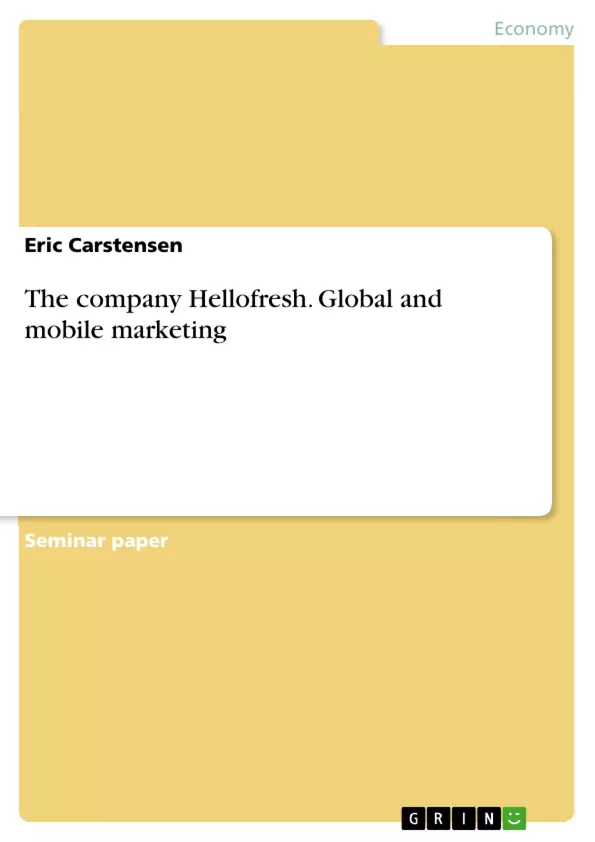This thesis examines the company Hello Fresh which was founded in Germany in 2011. So far, the company is present in thirteen countries and has over 2 million customers. Hello Fresh brings home meals that customers have prepared themselves. The products are mostly from the customers' immediate environment to be fresh and sustainable. There are different options that are suitable for everyone, such as a vegetarian option or one with meat. In this way as many customers as possible are reached.
The customers can choose online via computer or smartphone the dishes they want and receive a box of Hello Fresh with fresh dishes delivered to their home on a regular basis, for example weekly or monthly, depending on the customer's request. These boxes are usually sufficient for 3 to 5 dishes per week for 2 to 4 people. In addition, recipes are also included in the boxes which give the customer step-by-step instructions on how to prepare the individual dishes. This means that customers do not have to know how to cook, but Hello Fresh helps them with the enclosed cooking instructions and recipes. To give the customer a first impression of the food Hello Fresh offers free shipping on the first delivery and 20€ discount on the first ordered box and 5€ discount on the second and third ordered box.
It is described whether Hello Fresh is global, regional or local. Next, a digital and social media campaign is planned for three countries to support the expansion. Hello Fresh is already in Sweden, but according to German headquarters it will expand. In Scandinavia, it will continue to Denmark and Finland. Afterwards table is created in the which allows a clear visual comparison of Hello Fresh's marketing mix across eight countries and help to understand the use of standardisation and adaption with examples.
Table of Contents
- Introduction
- Hello Fresh
- Global - Regional - Local
- Global marketing
- Hello Fresh in Scandinavia
- mobile marketing
- Advertising HelloFresh in Scandinavian countries
- Conclusion
- Appendices
- References
Objectives and Key Themes
This thesis examines Hello Fresh, a meal kit delivery company, exploring its global expansion and marketing strategies. It investigates whether the company operates on a global, regional, or local level and analyzes its marketing efforts in Scandinavia.
- Global versus local business model of Hello Fresh
- Marketing strategies for international expansion
- Hello Fresh's presence in Scandinavia
- The role of mobile marketing and social media in promoting Hello Fresh
- Adaptation and standardization of marketing strategies across different countries
Chapter Summaries
- Introduction: This chapter provides an overview of Hello Fresh, its origins, business model, and current market presence. It also introduces the focus of the thesis, which is to examine Hello Fresh's global expansion and marketing strategies.
- Hello Fresh: This chapter delves into the question of whether Hello Fresh is a global, regional, or local company. It analyzes the company's own description of its operations and discusses the factors that contribute to its international expansion.
- Hello Fresh in Scandinavia: This chapter focuses on Hello Fresh's presence in Scandinavia, specifically discussing its marketing strategies in Sweden, Denmark, and Finland. It also explores the role of mobile marketing and social media in promoting the brand in this region.
Keywords
The key terms and concepts explored in this thesis include global marketing, international expansion, regional localization, meal kit delivery, mobile marketing, social media marketing, and the Scandinavian market.
- Citation du texte
- Eric Carstensen (Auteur), 2020, The company Hellofresh. Global and mobile marketing, Munich, GRIN Verlag, https://www.grin.com/document/1168786



